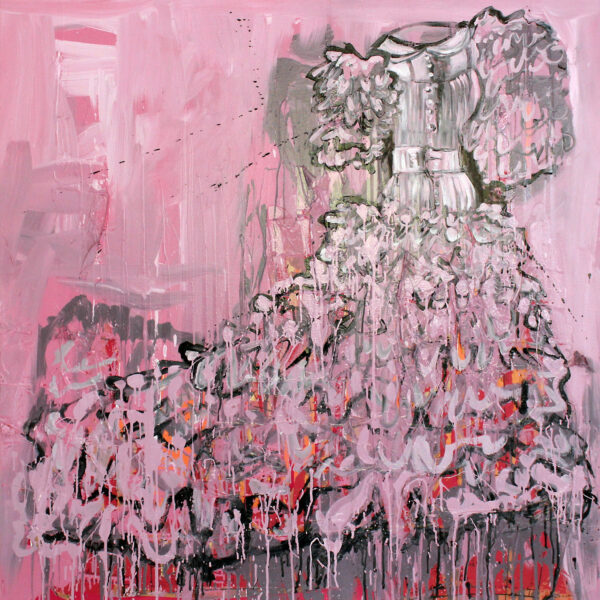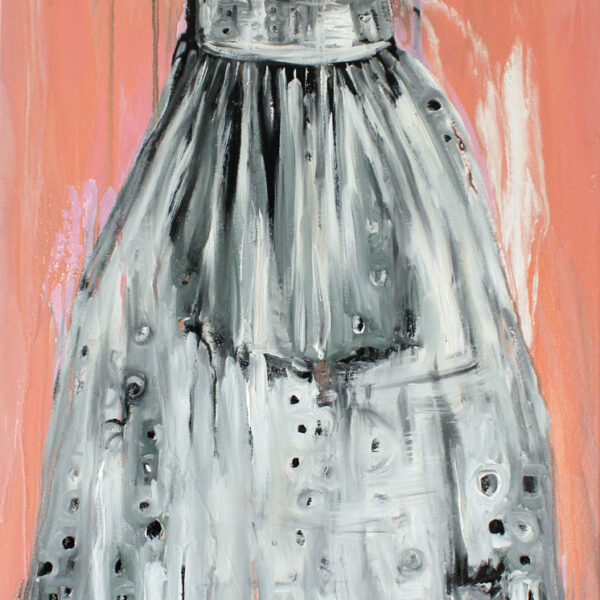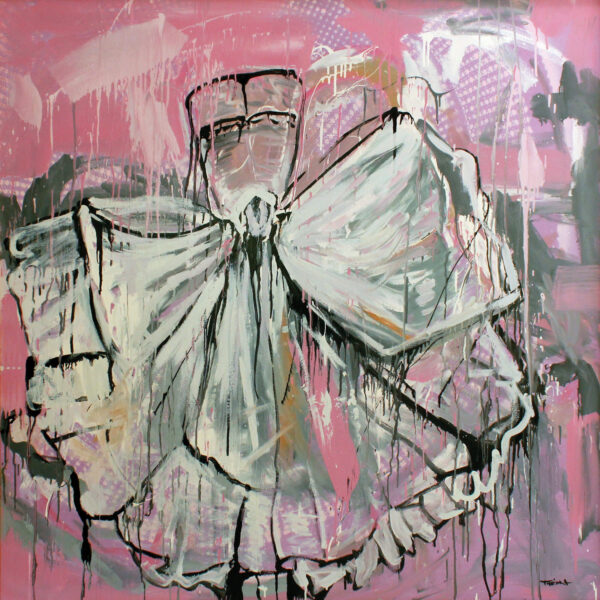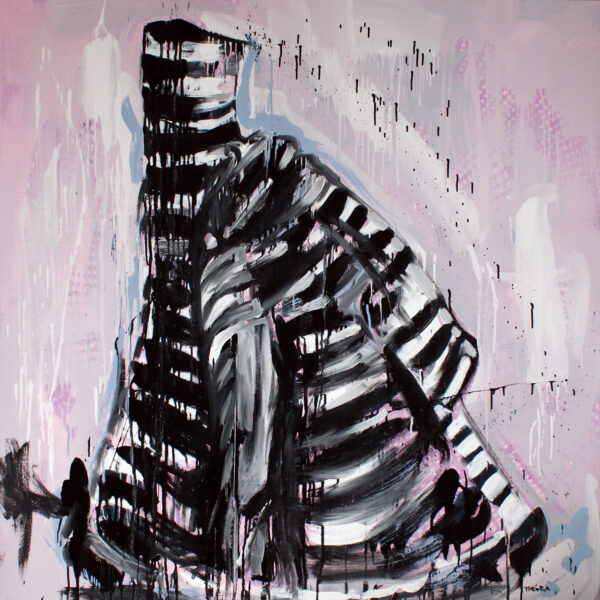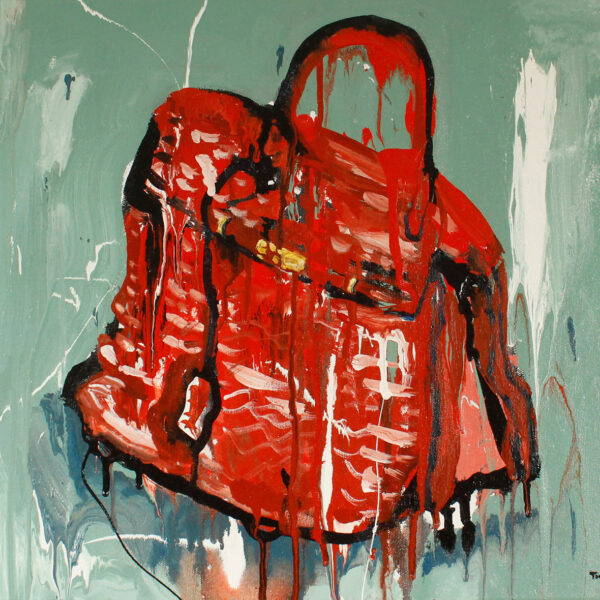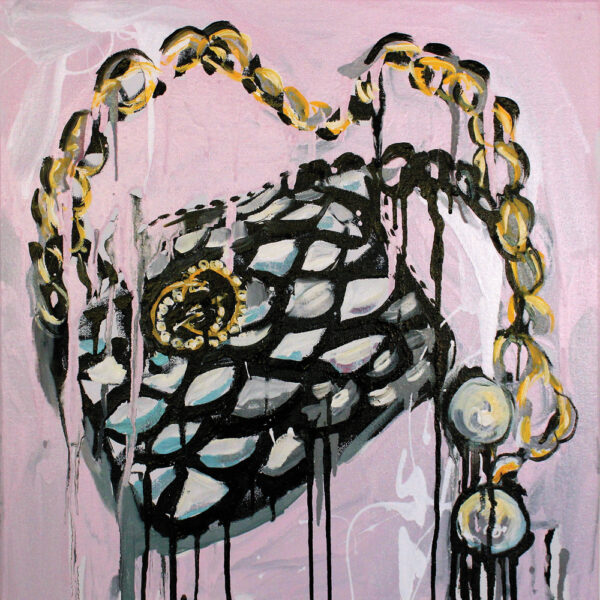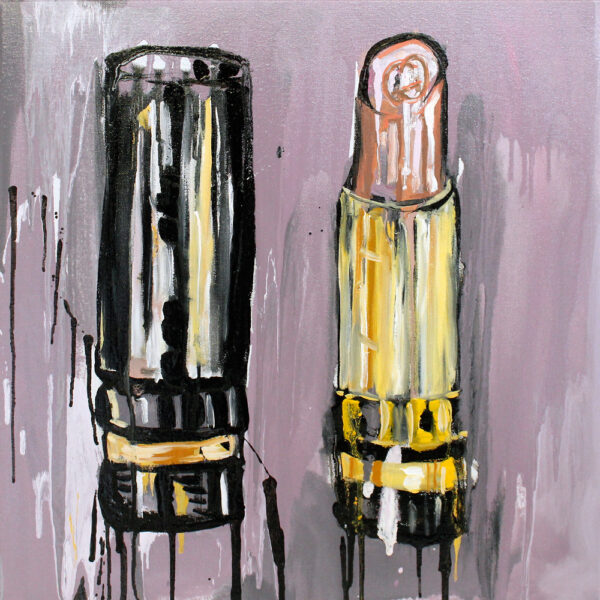Essay by Dr. Penelope Wickson
For an exhibition at Heidi Vaughan Fine Art, Houston
September 8 – October 13, 2018
This deliberately playful series with its enticingly sophisticated European title, “Accoutrements”, emerged out of a formative trip to England that Thedra Cullar-Ledford enjoyed with a patron friend from Houston who made it possible for her to spend a week at the exclusive girls’ school attended by her three daughters. The environment of the traditional English boarding school in which friendships reign and dressing up and putting on make-up present joyous opportunities for bonding, provided Cullar-Ledford with ample opportunity to investigate the boundaries between girlhood and adulthood — a theme that she was able to explore further during shopping trips with her grownup friend to the exclusive retail wonderlands of Chanel and Gucci. Thus in the context of friendship, magical objects such as a pair of embellished sunglasses or a magenta lipstick not only symbolise a fleeting moment in the fashion cosmos but also represent gratitude and camaraderie — an excess in design matched by an effervescent generosity that Cullar-Ledford captures in paint.
“Accoutrements” represents the first body of work to be completed after Thedra Cullar-Ledford’s diagnosis with breast cancer and her subsequent double mastectomy in 2014 that does not deal with the impact of cancer and its aftermath. Although this new series of eighteen pieces shares some of the themes of this intensely traumatic phase of the artist’s career, namely gender identity and the materiality of the body and its adornments, it marks a departure. In this new collection paint is used to conjure up a magical materiality that captures the decadent aura of the original motif: a new lipstick, a beloved heirloom, an iconic handbag passed down through generations. These works signify, therefore, a celebration of the seemingly transient pleasures of life — pleasures rendered more acute by the spectre of what might have been — whilst their place within the tradition of vanitas urges us to indulge in those inanimate objects that bring us joy. However, the simple acts of putting on make-up, sporting a designer accessory and dressing up for a party take on a monumental significance as these are the activities capable of generating the bonds of friendship and creating the maternal ties that will stand the rest of time. In a sense, contrasting with Cullar-Ledford’s worldly wise babies — paintings of dolls characterised by enormous pain-filled eyes and disjointed limbs, “Accoutrements” can be regarded as a claim to more innocent times whilst at the same time celebrating the various landmarks in a woman’s life by drawing attention to what luxury objects might mean in terms of her career, relationships and erotic life.
The luxury items celebrated here are a recognition of the powerful connections that can exist between women of all ages and backgrounds. The first painting in the series — Lily Rose Chanel Dress — combines Cullar-Ledford’s fascination with the sparkling, remote allure of couture with her interest in the the craft that lies behind such improbably complex creations. Within a range of references, from the haute-couture tiered wedding dress worn by Lily Rose Depp for Chanel in January 2017 to the lace doilies belonging to her husband’s grandmother, ghostly presences hover. We sense the spirit of the daughter that Cullar-Ledford never had whilst a fragmented laughter can be heard from a far off play room and dressing up box. Similarly, Grandma’s Dress conjures up the ghost of a strong, hard-working and proud woman who had finally found herself in a position to be able to purchase such a heavenly garment for herself.
One of the most striking features of this group of images is their forceful materiality. Often bigger than life size, the physical presence and strength of the objects that is suggestive of the body of the wearer is interwoven with Cullar-Ledford’s working practice — a practice that amplifies the defiance and joy of the original, powder puffs, stiletto platforms and leather trousers that had inspired her. Indeed, the force of Cullar-Ledford’s working practice is intimately linked to her relationship with her estranged father who is also a practising artist, but one whose style is tighter, neater and less demanding both visually and intellectually. Cullar-Ledford feels strongly, as she explains, that she ‘didn’t want her style to be precious’ — an especially powerful statement in relation to the depiction of such ostensibly luxurious subject matter. The edges of the objects blur as they are defined by rippling black outlines that threaten to explode into the space of the viewer such is the force of their fluidity. Thus her working practice has much more in common with the boldly masculine drip paintings of Jackson Pollock and the darkly humorous works of Philip Guston (teacher of Philip Morsberger who was Cullar-Ledford’s professor at California College of the Arts and a former Headmaster at the Ruskin School of Art) than it has with the more conservative output of her father.
Like her symbolic artistic forefathers, Cullar-Ledford displays intense concern with colour and states that finding the right heavenly pink ‘was a technical test of endurance’. The use of sign painters’ paint adds a glossy veneer evocative of glistening shop windows, intimate mirrors and cascading chandeliers whilst adding a skin-like intensity to the luminous pastel hues. The rococo sweetness of the “Accoutrements” palette belies the complexity of its creation — the commercial paint was so toxic that the works had to be completed outside. Their production involved a process just as magical as the wearers of the apparel and their lustrous lip colour and blush. Highly self-reflexive, seeking to capture the powdery, rosey hues of cosmetics and the tantalising packaging of cupcakes and Ladurée macaroons, Cullar-Ledford explains that ‘the greatest thing about a painting is when it’s luscious, quick and almost not finished’. These are tactile, sensual works that inspire us to devour them, yet they convey a sense of imperfection in their bold gestures. They spill their feminine joy, erupting in a celebration of desire, friendship and success as they perform their gorgeousness for our delectation.



